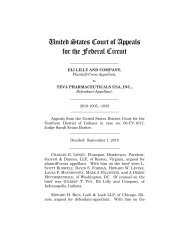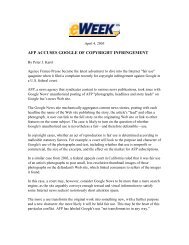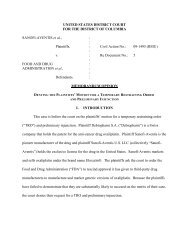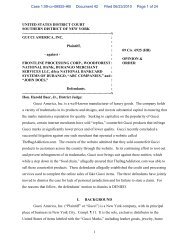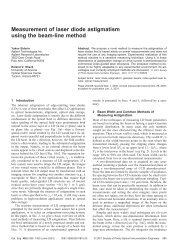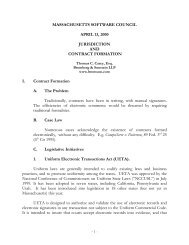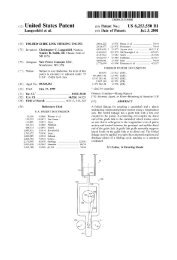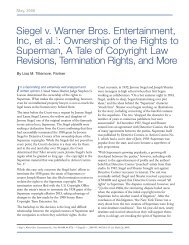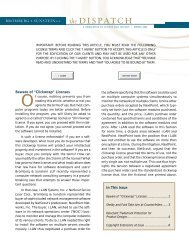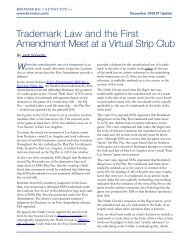Bard Peripheral Vascular, Inc. v. WL Gore
Bard Peripheral Vascular, Inc. v. WL Gore
Bard Peripheral Vascular, Inc. v. WL Gore
Create successful ePaper yourself
Turn your PDF publications into a flip-book with our unique Google optimized e-Paper software.
25BARD PERIPHERAL v. <strong>WL</strong> GOREnot have been obvious to a person of ordinary skill in theart in light of Volder alone for claims 20 to 24 and 27, orVolder and Matsumoto in combination for claims 20 to 27.Verdict Form, at 17. The district court denied <strong>Gore</strong>’smotion for judgment as a matter of law on obviousness.Obviousness II, 2009 <strong>WL</strong> 886515, at *7; Obviousness I,2008 <strong>WL</strong> 2954187, at *6.Volder discusses how “grafts of <strong>Gore</strong>-Tex porouspolytetrafluoroethylene (G-PTFE) were evaluated” andthat “G-PTFE is a material with extremely promisingcharacteristics” for A-V shunts. Volder at 38. Volderfound that “[s]hunts of G-PTFE have as favorable characteristicsthat . . . are readily available” because “thematerial withstands puncturing, and there is neointimahealing with extensive ingrowth of fibroblasts and capillaries.”Id. at 39. Additionally, while “the tissue infiltrationis not complete in certain areas,” Volder “believedthat by increasing the average pore size of the material,at the moment 5 μ, it will be possible to accelerate theprocess of tissue infiltration and development of capillaries,”which would “result in a faster healing and moredurable neointima.” Id.A claim is obvious when “the differences between thesubject matter sought to be patented and the prior art aresuch that the subject matter as a whole would have beenobvious at the time the invention was made to a personhaving ordinary skill in the art to which said subjectmatter pertains.” 35 U.S.C. § 103. To determine whethera patent is obvious, a district court must base its determinationon factual inquiries involving: (1) the scope andcontent of the prior art, (2) differences between the priorart and the claims, (3) the level of ordinary skill in thepertinent art, and (4) secondary considerations, such ascommercial success, satisfaction of a long-felt need, and



